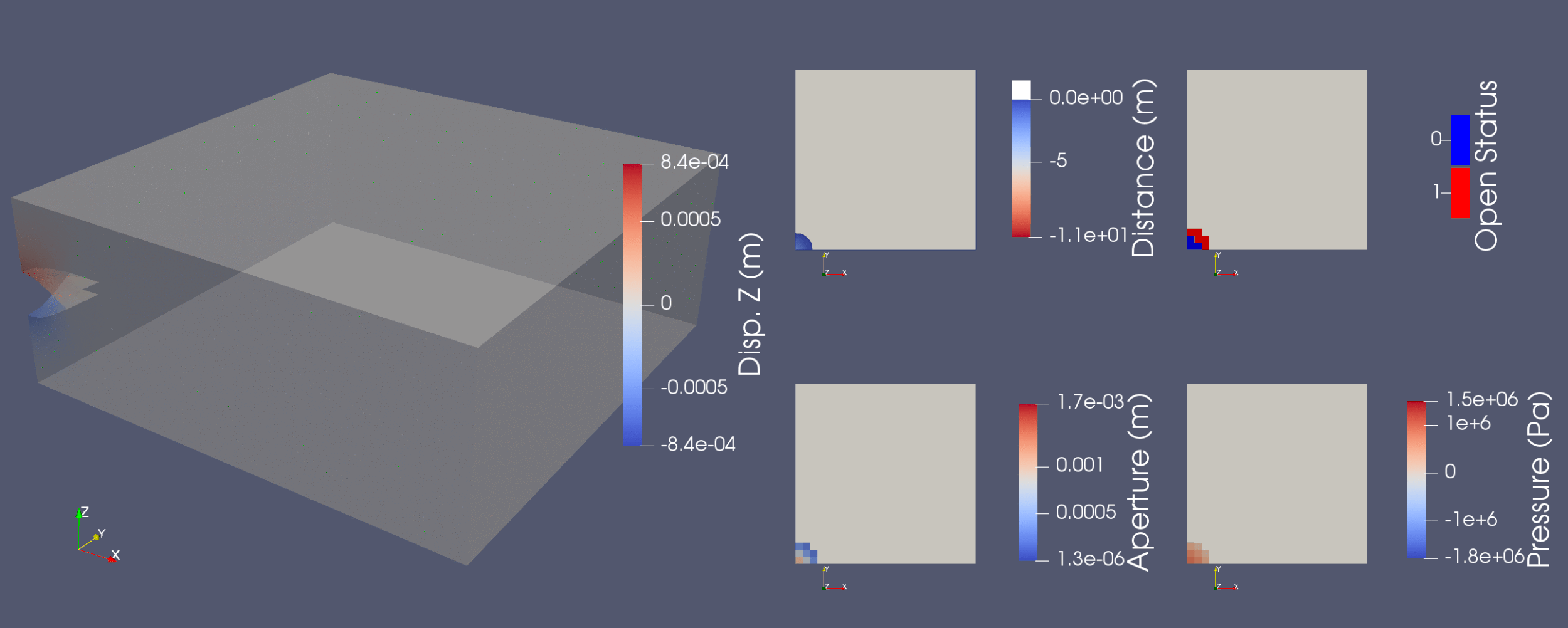Propagating fracture in porous media driven by fluid-induced pressure:
Fig 1. Fractures are initialized at two different locations due to injected fluid pressure and merge with each other.
Fig 2. Fracture propagates around a rigid area and then merges again.
Background and motivation: In many geological processes and applications, fracture propagation in prestressed porous media is driven by the internal pressurization due to injected viscous fluid. Numerical strategies applicable to field-scale fracture simulations have significance in advancing the scientific understanding of various natural phenomena in geoscience and disrupting the status quo of geological engineering techniques. The accuracy and robustness of these numerical strategies largely hinge on the appropriateness of fracture propagation criteria for different propagation regimes, such as the toughness-dominated regime and the viscosity-dominated regime, as well as the effectiveness of numerical methods to locate the fracture front in discretized computational domains.
In this research, we are working with scientists from the Atmospheric, Earth, & Energy Division at the Lawrence Livermore National Laboratory. Particularly, we focus on simulating the fluid-driven fracture propagation in the context of a fully coupled finite element-finite volume computational framework. An important feature of our numerical approach is to combine the fracture tip asymptotic solutions with the Eikonal equation to locate and track the fracture front inside the discretized computational domain (Figs. 1 and 2). This numerical approach is implemented with GEOSX, which is an open source simulation framework for modeling coupled flow, transport, and geomechanics in the subsurface. The targeted applications include hydraulic fracturing, carbon sequestration, geothermal energy, and similar geological systems that require scalable numerical algorithms and implementations.


